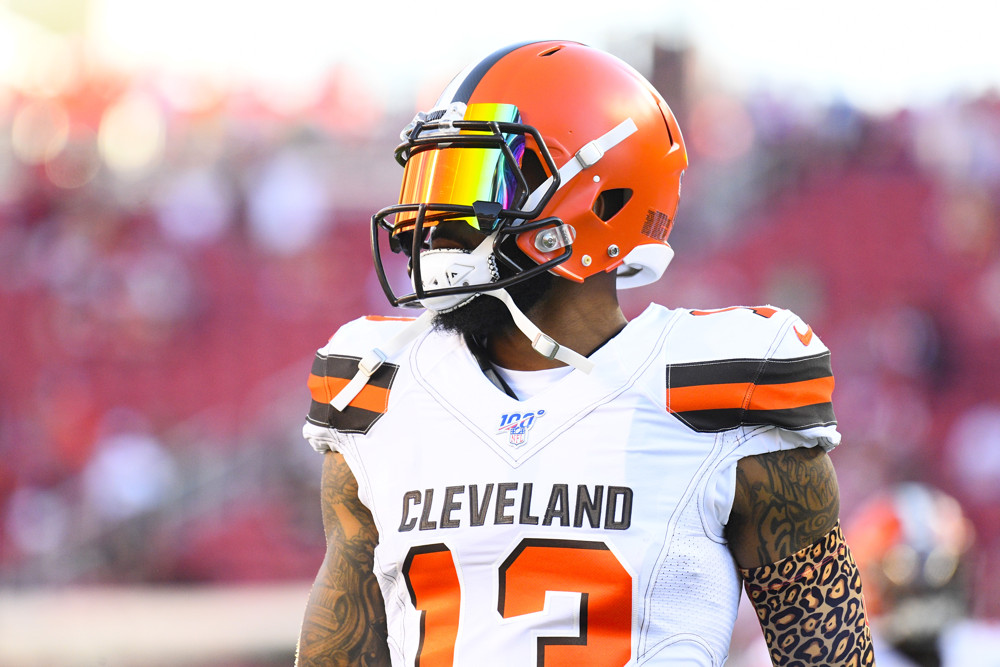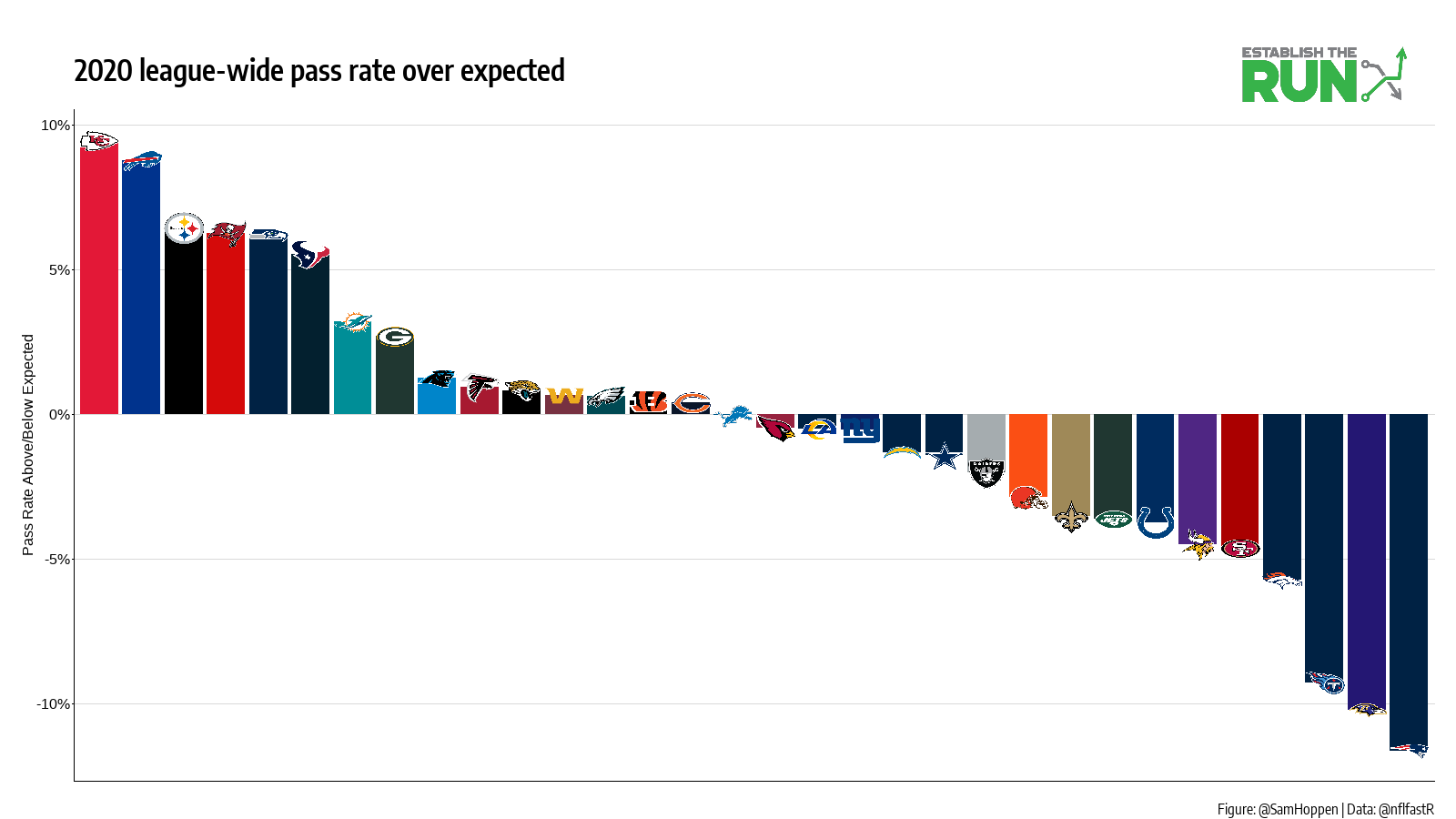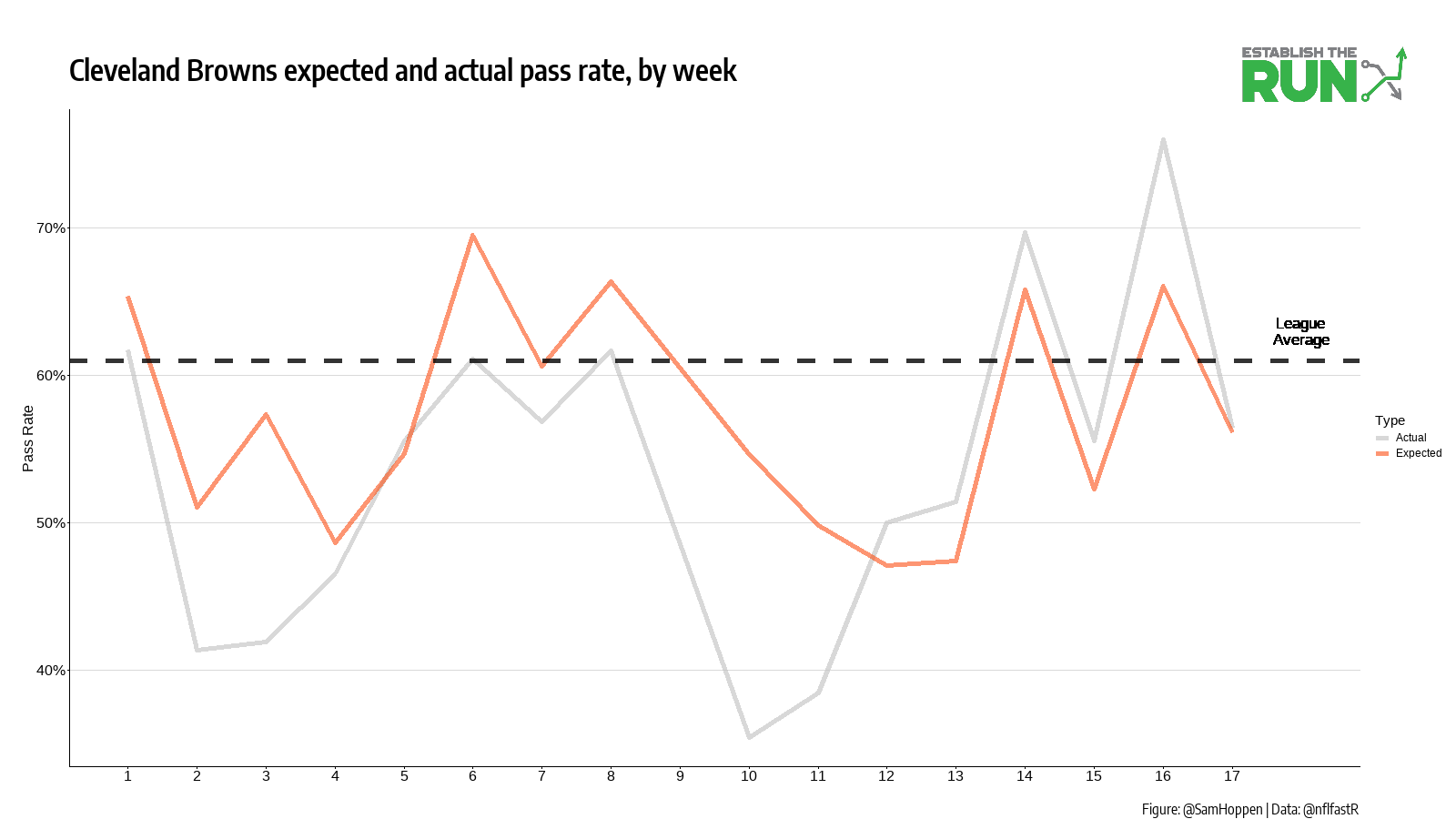IMPORTANT Editor’s Note for NFL DRAFT KIT SUBSCRIBERS: Underdog Fantasy is offering ALL ETR subscribers an unbeatable deal. Anyone who purchases the ETR Draft Kit will receive a $10 site credit. First-time Underdog customers will receive an additional $25, making our Draft Kit nearly free if you haven’t tried Underdog yet! After purchasing our Draft Kit, follow the instructions here to claim your reward.
The most undervalued players in drafts are often talented players in less than ideal situations — bad team, crowded target share, difficult schedule, etc. As drafters, we become overconfident in how we view the situation. Put another way, we don’t view the situation dynamically. We take for granted that the bad situation is going to play out as expected, and as a result our value proposition for a player on that team is driven by that assumption.
In reality, it may be true that the less-than-ideal situation is the most likely outcome, but in the chaos of an NFL season, even the most likely outcome is a dog to all of the other outcomes that could potentially play out. However, since we are so focused on the most likely outcome, our valuation of players fails to consider the dynamics of what might happen in all those other potential outcomes. Layer in the fact that situations that are assumed to be bad situations likely have more room to get better than worse, and ADP is often inefficient on talented players in these types of situation. You can draft them at a price where if the bad situation plays out as expected, you haven’t lost much. That was fully baked into the price. Now, if the situation for some unforeseen reason improves, you could have a hefty profit on your hands.
Two players exemplified this last season to a T: Stefon Diggs and Keenan Allen.
Diggs is a player who I gradually got on over the offseason, thanks in large part to conversations with Ben Gretch, who made me realize that I was too focused on the most likely outcome (crowded target share, inefficient QB play, defensive-minded head coach), instead of focusing on what the talent of the player could lead to if the situation ended up rosier than expected. Of course, that most likely outcome looks silly now. Crowded target share? Diggs’ talent led to a 29.4% target share despite entering a crowded WR room, but one that lacked elite talent. Inefficient QB play? Josh Allen finished fifth in the NFL in adjusted net yards per pass attempt and fourth in completion percentage. A defensive-minded head coach? The Bills had one of the highest pass rates over expectation in the entire league, which coupled with Diggs’ elite target share allowed him to lead the NFL in targets.
Maybe Diggs dominating target share wasn’t a huge surprise, but that combined with excellent QB play and a pass-heavy team approach certainly was. It’s easy to throw our hands up and say “Who could have predicted that?”, but that’s the point. We can come up with educated guesses about what will happen, but those guesses have a lower probability of occurring than we assume, while outcomes we haven’t even considered have a higher than expected probability of occurring.
Keenan Allen‘s situation is an even crazier example of the chaos of an NFL season. Tyrod Taylor suffers a fluke injury before the team’s second game, and the team’s arguably over-drafted rookie QB, Justin Herbert, comes in and lights the world on fire. With strong QB play and a less run-heavy approach than expected, Allen finished fifth in the entire NFL in targets.
Diggs’ FFPC ADP as we last recorded it before the season ended up at 66.2 and WR28; we had him ranked 55th and WR26 in that format.
Allen’s FFPC ADP as we last recorded it before the season ended up at 53.5 and WR24; we had him ranked 62nd and WR29 in that format.
Diggs finished the season as WR3, and Allen finished the season as WR13.
Now, hindsight is 20/20. At ETR we were ahead of market on Diggs and behind market on Allen. We didn’t see either of their seasons coming. Regardless, the cost was amenable for both players. They were being drafted as backend WR2s in most drafts, sometimes as WR3s. At that point, the situational risk was almost fully baked in.
As Adam Levitan often says, we don’t want to chase outliers, which both Diggs and Allen certainly were. However, one of Adam’s best skills is his ability to understand the fallibility of projections when fragile inputs and assumptions are taken for granted. We don’t claim to have a crystal ball, but it’s worth taking a look at this year’s WRs to see if any asymmetric bets like Allen and Diggs exist out there. Players where the ceiling is incredible if unforeseen things break positively, but the floor is cushioned by an excellent market price. This exercise also helps us to question our own assumptions and double check our preconceived notions about players’ fantasy value.
2021 WR Bets with WR3 ADP
1. Odell Beckham
Sharp people, including ESPN’s Seth Walder and Mike Clay, have pegged the Browns as Super Bowl contenders. Yet, here’s their pass catcher ADP on FFPC right now:
Obviously, a big driver in the thesis behind the Browns as Super Bowl contenders is their defensive talent and awesome run game, but if this team reaches their true potential, it’s going to involve putting up points. More specifically, it’s likely going to involve more passing and more passing efficiency.
It’s possible the market is undervaluing how much the Browns could throw last year. They were certainly a run-heavy team in 2020:
However, there are two points of context worth discussing:
- In Weeks 8, 10, and 11, the Browns played in dismal weather, which explains the severely low pass rates. Now, they play in Cleveland. Could this happen again? Yes, but it seems unlikely to get worse than that stretch of three windy home November games they faced in 2020.
- The Browns had a positive pass rate over expectation just once in their first 11 weeks. As Baker Mayfield played better and the offense found their footing, the Browns had a positive pass rate over expectation in each of their final 6 weeks. Arbitrary endpoints are dangerous, but it’s hard to dismiss the notion that there was a conscious shift occurring.
So, we have some evidence that the Browns are willing to be more aggressive through the air. Similar to the Bills last season, it wouldn’t be surprising to see that aggressiveness correlated somewhat with QB play. Baker Mayfield was a phenomenal prospect who was taken first overall and looked the part in his rookie season, posting a 7.5 AY/A. However, he declined sharply in 2019, watching his TD rate, AY/A, INT rate, and sack rate all go in the wrong direction. He then had a lowkey breakout season in 2020. If we zone in on Mayfield’s QBR, his trajectory looks a little bit less strange. I like QBR because it does a good job accounting for contextual factors, such as strength of schedule. Mayfield finished 10th in the NFL in QBR last season:
We’ve spent a lot of time thus far looking at how the Browns’ passing game could look different in 2021, which would result in a big opportunity for Odell Beckham. Ironically, for a piece talking about WR skill being undervalued, we haven’t talked a lot about Odell Beckham himself. He certainly enters 2021 with some question marks. He’s coming off an ACL injury. He’s moved to the wrong side of the age curve. He’s largely been thought of as a disappointment following his blistering first three seasons in the NFL.
So, this isn’t quite the asymmetric bet Stefon Diggs was last year because we have legitimate concerns over the player’s talent. Still, if we exclude the game Beckham got hurt very early last season, he’s averaged 13 PPR points per game as a Brown. That’s WR3 territory, but that’s where he’s being drafted. I don’t think it’s irrelevant to point out that Beckham’s first three seasons were historically good, and he still flashed weekly upside with a 38-point outing against the Cowboys last season, albeit did not eclipse 100 yards receiving in any outing. Beckham also may be shorted on target share upside by the market if they use his 20% number from last season, which includes the Week 7 game he got hurt on his lone target. Through six weeks, Beckham’s target share was 23%, and he had nine more targets than the next closest Brown. There’s not a ton of competition for targets in this offense.
All in all, maybe I am more into betting on a piece from the Browns’ passing game somewhere at current ADPs than I am into betting on Beckham specifically given some injury and age concerns, but Beckham has also shown a level of talent previously that could lead to a WR1 season should the macro situation break right.
2. Robby Anderson
There are two assumptions with Robby Anderson that I don’t necessarily think are wrong as the most likely scenarios, but I do think the market is overconfident in. The first of these assumptions is that D.J. Moore is a way better fantasy bet than Anderson. The gap between both players right now is huge (and we like both as ADP values):
In this offense just a year ago, Moore and Anderson had identical PPR averages. Now, if you had to choose between the two options, Moore is the better bet. He’s a better prospect, younger, and there are few WRs in NFL history that have banked Moore’s production at his age. The massive ADP gap, though, fully assumes the reasons Moore is a better talent bet, while fully discounting the fact that Anderson scored as much as him last season with a slightly higher target share.
The other assumption the market seems to be making is that Sam Darnold is awful. It’s tough to argue that hasn’t been the case. Darnold finished 33rd out of 35 signal callers in QBR last season, behind only Alex Smith and Dwayne Haskins. There is probably a floor drop off moving from the high-completion-percentage Teddy Bridgewater to the low-completion-percentage Sam Darnold, but away from Adam Gase with a better support system, the former third overall pick offers more upside and will be more aggressive. The last two seasons, Bridgewater’s average intended air yards were 6.2 and 7.3, while Darnold’s were 8.6 and 7.8.
Ultimately, it feels like the market is fully baking in risks for Anderson (that D.J. Moore is much better, that Sam Darnold is a QB downgrade) and ignoring upside scenarios (that Anderson simply repeats his 27% target share according to NFL Savant, that D.J. Moore gets hurt and that target share balloons even higher, that Sam Darnold is an improvement over Teddy Bridgewater). Also, I’m contractually obligated to say the words “shower narrative” at least once here, or I will be fired.
3,4,5. All three Bengals WRs
All three of Chase, Higgins, and Boyd are being drafted in WR2-3 territory and have WR1 capabilities, particularly the former two. I wrote about the Bengals’ passing attack previously this offseason, including notes on why we shouldn’t be scared off by the perceived target share competition here.







